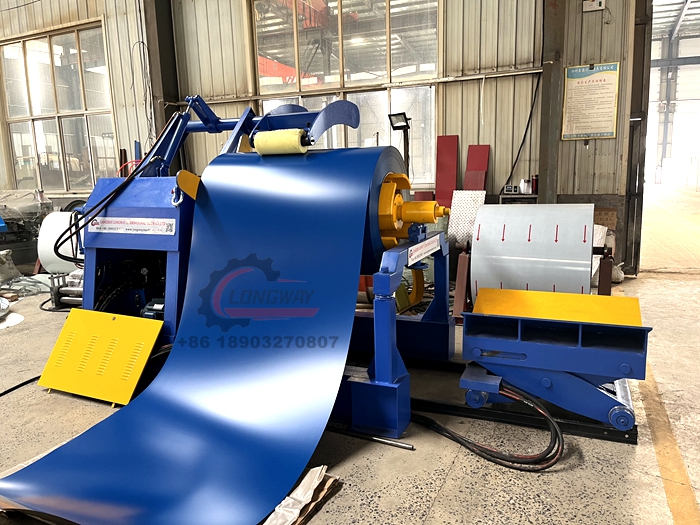High-Quality Roll Forming Machines from China for Efficient Manufacturing Solutions
The Rise of Roll Forming Machines in China A Comprehensive Overview
In recent years, China has emerged as a global leader in various manufacturing sectors, including the production of roll forming machines. These machines play a crucial role in shaping and fabricating metal products used across diverse industries, from automotive to construction. Understanding the significance of roll forming machines in China involves exploring their design, functionality, and impact on the market.
What is Roll Forming?
Roll forming is a continuous bending operation in which a long strip of metal is gradually shaped into a desired cross-section through a series of rollers. This process is particularly advantageous for producing consistent shapes with a high degree of accuracy and minimal waste. The versatility of roll forming makes it an ideal choice for producing components such as roofing panels, purlins, and tracks for various applications.
The Features of Roll Forming Machines
A roll forming machine typically consists of several key components, including a decoiler, rollers, a cutting system, and a control panel. The decoiler feeds the raw material into the machine, while the rollers shape the material into the desired form. The cutting system, often equipped with advanced technologies, ensures precise lengths and tolerances.
Modern roll forming machines are increasingly automated, incorporating computer numerical control (CNC) systems for enhanced precision and efficiency
. This automation allows manufacturers to produce complex shapes with minimal manual intervention, speeding up production times and reducing errors.China’s Manufacturing Landscape
China's position as a hub for roll forming machine production can be attributed to several factors. The country boasts a vast and skilled workforce, along with a comprehensive supply chain that provides easy access to raw materials and components necessary for manufacturing. Additionally, the Chinese government has implemented supportive policies aimed at enhancing manufacturing capabilities, which have further stimulated growth in this sector.
The boom in construction and infrastructure development in China has also significantly driven demand for roll forming machines. As urbanization accelerates, the need for materials such as steel framing and roofing sheets has soared, creating an ideal market for roll forming technology.
roll forming machine china

Advancements and Innovations
Chinese manufacturers have been at the forefront of innovative roll forming technologies. The latest machines are designed with improved energy efficiency, reduced maintenance needs, and enhanced flexibility to accommodate various materials and designs. Innovations such as hybrid systems that combine roll forming with other processes, like laser cutting, are gaining traction, allowing for even more complex designs.
Moreover, artificial intelligence (AI) and IoT technology are being integrated into roll forming processes. By utilizing real-time data and analytics, manufacturers can optimize production lines, predict maintenance needs, and improve product quality. These advancements are ensuring that Chinese roll forming machines remain competitive in a global market increasingly driven by technology and efficiency.
The Global Impact
China’s dominance in roll forming machine manufacturing has not only influenced its domestic market but has also made waves globally. Many countries now source their roll forming equipment from Chinese manufacturers due to competitive pricing and high-quality output. As a result, China has become a significant exporter of roll forming machines, contributing to the global manufacturing ecosystem.
However, competition is intensifying, with countries like Japan, Germany, and the United States also investing in advanced manufacturing technologies. As these competitors develop their roll forming capabilities, it will be crucial for Chinese manufacturers to continue innovating and improving upon their designs to maintain their competitive edge.
Conclusion
In conclusion, roll forming machines are a cornerstone of the metal fabrication industry, and China has established itself as a leader in this field. The combination of a strong manufacturing base, continual innovation, and a responsive supply chain has positioned Chinese manufacturers at the forefront of the global market. As the world continues to evolve, so too will the technologies and methodologies surrounding roll forming—ensuring that China remains a key player in the unfolding narrative of industrial manufacturing.
With ongoing investments in technology and infrastructure, it is evident that the future of roll forming machines in China is bright, promising significant advancements that will benefit industries worldwide.
-
Roof Panel Machines: Buying Guide, Types, and PricingNewsJul.04, 2025
-
Purlin Machines: Types, Features, and Pricing GuideNewsJul.04, 2025
-
Metal Embossing Machines: Types, Applications, and Buying GuideNewsJul.04, 2025
-
Gutter Machines: Features, Types, and Cost BreakdownNewsJul.04, 2025
-
Cut to Length Line: Overview, Equipment, and Buying GuideNewsJul.04, 2025
-
Auto Stacker: Features, Applications, and Cost BreakdownNewsJul.04, 2025
-
Top Drywall Profile Machine Models for SaleNewsJun.05, 2025








